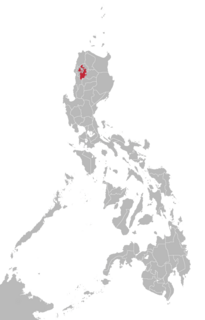Related Research Articles
Most languages of Europe belong to the Indo-European language family. Out of a total European population of 744 million as of 2018, some 94% are native speakers of an Indo-European language; within Indo-European, the three largest phyla are Romance, Germanic, and Slavic with more than 200 million speakers each, between them accounting for close to 90% of Europeans. Smaller phyla of Indo-European found in Europe include Hellenic, Baltic, Albanian, Celtic and Indo-Aryan.
Luhya is a Bantu language of western Kenya.
Ngiri is a Bantu language closely related to Lingala.
Central Tibetan, also known as Dbus, Ü or Ü-Tsang, is the most widely spoken Tibetic language and the basis of Standard Tibetan.
Yaka, also spelled Iaca and Iyaka, is a Bantu language spoken in the Democratic Republic of the Congo and Angola. There are two dialects, Yaka proper, which comprises 99% of speakers, and Ngoongo. The alleged varieties Pelende and Lonzo are political rather than ethnolinguistic entities.
West Teke is a Bantu language spoken in the Republic of Congo and Gabon.
The Ki language, Tuki, is a Southern Bantoid language of Cameroon.
Southern Luo is a dialect cluster of Uganda and neighboring countries. Although Southern Luo dialects are mutually intelligible, there are six ethnically and culturally distinct varieties which are considered to be separate languages socially.
Ede is a dialect continuum of Benin and Togo that is closely related to the Yoruba language. The best-known variety is Ife.
Huishui Miao, a.k.a. Huishui Hmong, is a Miao language of China. It is named after Huishui County, Guizhou, though not all varieties are spoken there. The endonym is Mhong, though it shares this with Gejia and it is simply a variant spelling of Hmong. Raojia is closely related.
Kayan is a dialect cluster spoken by the Kayan people of Borneo. It is a cluster of closely related dialects with limited mutual intelligibility, and is itself part of the Kayan-Murik group of Austronesian languages.
Mumeng is a dialect chain of the Austronesian family in Morobe Province, Papua New Guinea. Dambi–Kumalu and Patep–Zenag–Gorakor have a degree of mutual intelligibility. Kapin may belong as well.
Lamaholot, also known as Solor or Solorese, is a Central Malayo-Polynesian dialect cluster of Flores, Indonesia. The varieties may not be all mutually intelligible; Keraf (1978) reports that there are 18 languages under the name.

Itneg is a South-Central Cordilleran dialect continuum found in the island of Luzon, Philippines. This language and Ilocano are spoken by the Itneg people in Abra.
West Arawe is an Austronesian dialect chain of West New Britain, Papua New Guinea. The principal varieties are Apalik, Gimi, Aiklep, and Arawe proper (Solong).
Kimaragang (Marigang), Tobilung, and Rungus are varieties of a single Austronesian language of Sabah, Malaysia. The three varieties share moderate mutual intelligibility. Children are not learning it well in some areas.
Sepa is an Oceanic language of northeast New Guinea.
Taupota is an Oceanic language of the Milne Bay Province, Papua New Guinea. It appears to be a dialect chain, with southern varieties called Wa'ema and western Wedau.
Masela (Marsela) is the language of Marsela Island in southern Maluku, Indonesia. Regional varieties are distinct; Ethnologue counts it as three languages.
Atatláhuca–San Miguel Mixtec is a diverse Mixtec language of Oaxaca.
References
- ↑ Sepa at Ethnologue (18th ed., 2015) (subscription required)
Teluti (Sou Nama) at Ethnologue (18th ed., 2015) (subscription required)
| |||||||||||||||||||||||||||||||||||||||||||||||||||||||||||||
| |||||||||||||||||||||||||||||||||||||||||||||||||||||||||||||
| |||||||||||||||||||||||||||||||||||||||||||||||||||||||||||||||||||||
| |||||||||||||||||||||||||||||||||||||||||||||||||||||||||||||||||||||
| |||||||||||||||||||||||||||||||||||||||||||||||||||||||||||||||||||||
| |||||||||||||||||||||||||||||||||||||||||||||||||||||||||||||||||||||
| | This Austronesian languages-related article is a stub. You can help Wikipedia by expanding it. |